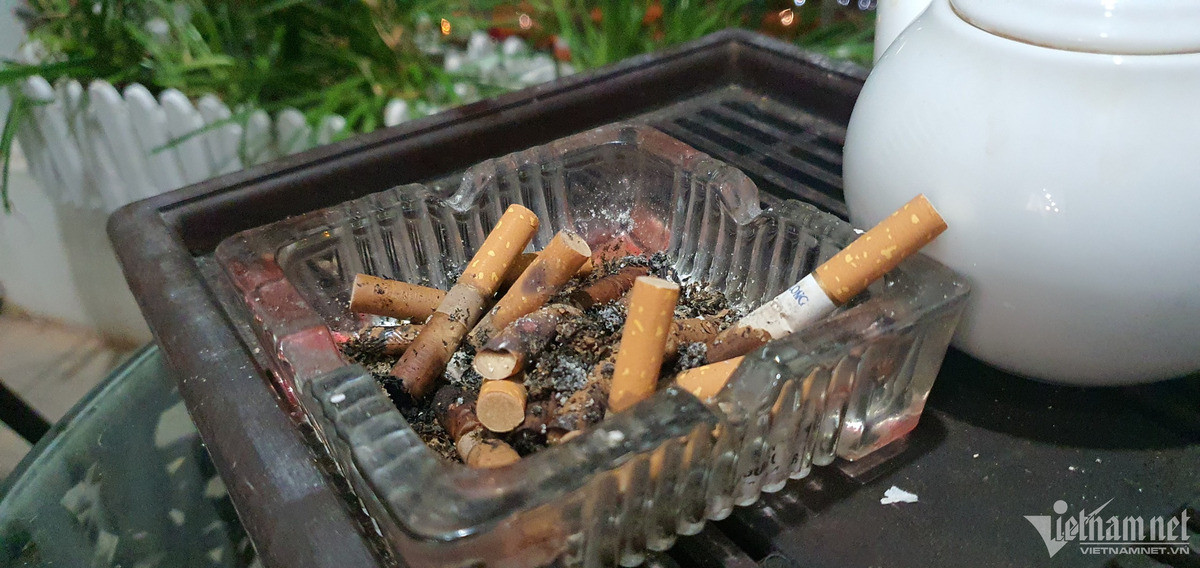
Dinh Thi Thu Thuy, deputy director of the Legal Department under the Ministry of Health (MOH), cited reports as saying that expenditures on healthcare services (direct and indirect) for diseases related to tobacco totalled VND108 trillion in 2022, or 1.14 percent of GDP.
The total budget collection from tobacco was just VND17.6 trillion, or one-fifth of the expenditure on healthcare services related to tobacco.
In 2008-2019, Vietnam raised luxury tax rates on tobacco three times but the tax increase was low, and the interval between tax increases was too long.
In 2008, the tax rate was raised from 55 percent to 65 percent and in 2016, the tax rate increased from 65 percent to 70 percent. Three years after that, the tax rate rose from 70 percent to 75 percent.
Though the tax rate appears to be high, the total tax the state collects based on tobacco retail prices just accounts for 38.8 percent.
Vietnam is still listed among the group of countries with the lowest tax rates on tobacco. The tax rate is lower than the average tax rate in ASEAN. Tobacco prices in Vietnam are just half of that in Thailand, and are just slightly higher than prices in Laos and Cambodia.
“The price of a package of the most popular cigarettes in Vietnam is less than one dollar, which is just half of the average price among countries with the lowest tobacco prices in the Western Pacific region."
Thuy said cigarette taxes and prices in Vietnam are very low, which makes it easy for both adults and children to buy cigarettes.
A survey of tobacco retail prices in Hanoi and HCM City in 2023 found there were about 40 tobacco brands with prices below VND10,000 per package.
Parents often give their children VND20,000-30,000 for breakfast, so the children may spend VND10,000 to buy steamed sticky rice, and use the remaining VND10,000-20,000 on cigarettes.
The Ministry of Finance proposed two options for tobacco taxation adjustments. Cigarettes would still bear the luxury tax rate of 75 percent and will also bear an additional tax expected to increase year after year in the 2026-2030 period.
In Option 1, the tax would increase by VND2,000 per package in the first year and reach VND10,000 by 2030.
In Option 2, the tax would increase by VND5,000 per package from 2026, and then by another VND1,000 in the next five years before it reaches VND10,000 in 2030.
But the Vietnam Tobacco Association wants much lower taxes, just VND1,000 per package by 2025 and VND3,000 by 2030. The ministry does not agree with the association’s proposal.
“The modest increase of VND1,000 per package is not high enough to cover the price slippage. Some well known brands are selling cigarettes at VND10,000 per package, and if the additional absolute tax of VND1,000 is imposed, the retail price would be just VND11,000 per package. The increase is insignificant, and not high enough to change people’s demand for cigarettes,” Thuy said.
Dr Angela Pratt, WHO's chief representative in Vietnam, said the Ministry of Finance is on the right track in its proposal to raise the tax on cigarettes, but the tax is not enough. In order to reach the goal of reducing the number of smokers, WHO recommends a higher tax rise, she said.
The starting luxury tax increase should be raised by VND5,000 per package in the immediate time and by VND15,000 by 2030. In addition, manufacturers would still have to pay the current tax rate of 75 percent of ex-factory prices.
If this solution were chosen, the number of smokers would fall by 13 percent, or 696,000 smokers by 2030 compared with 2020, and the state would be able to collect VND29.3 trillion more in tax each year.
Meanwhile, the Ministry of Health has proposed a tax of 15,000 per package (20 cigarettes) by 2030, in addition to the 75 percent luxury tax rate. The choice would allow a tax proportion of 65 percent of retail prices, which is near the level recommended by WHO. This would help reduce the number of male smokers to 36 percent by 2030.
Manh Ha